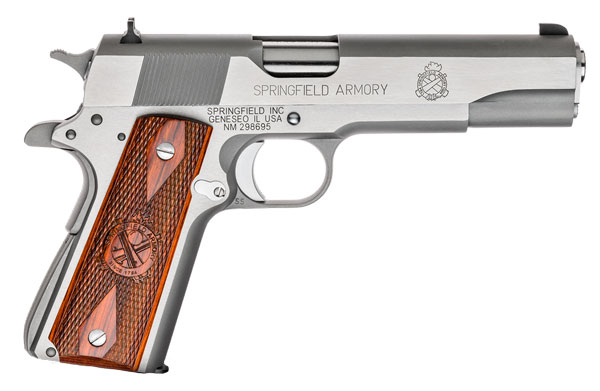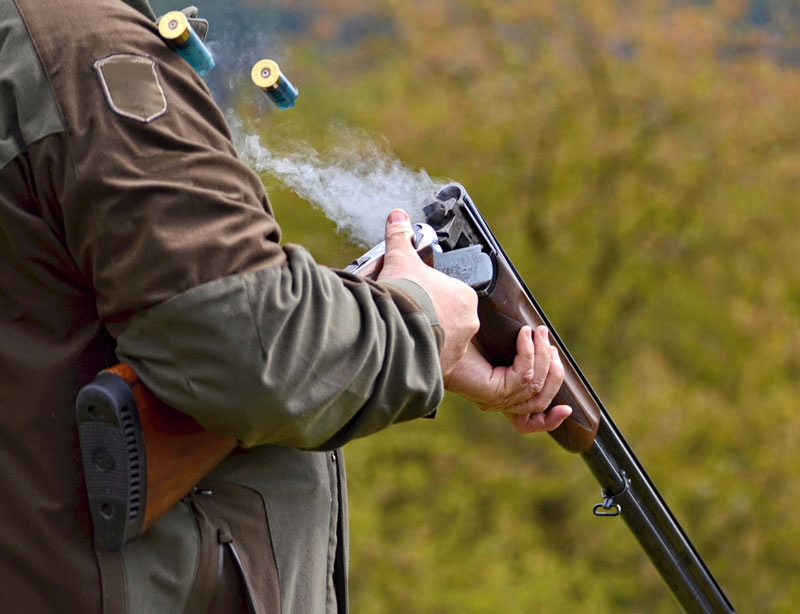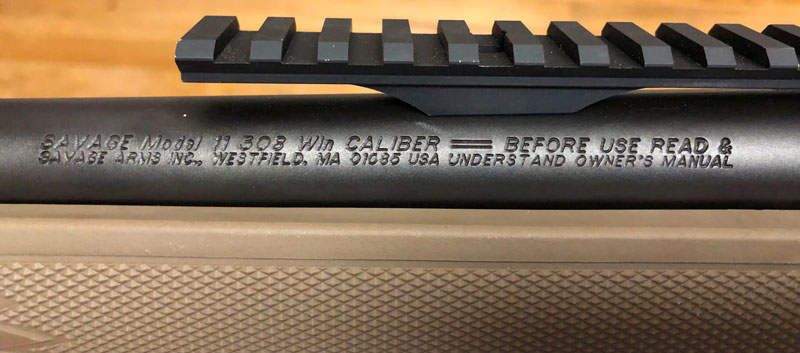Firearm Identification: A Guide for the Complete Beginner
Are you an absolute novice when it comes to firearms? Are you feeling a little overwhelmed by an endless sea of technical jargon on gun forums and in gun shops? Are you concerned that you don’t yet know how to recognize and describe the different types of firearms available to civilian marksmen and hunters? Fear not! We were all beginners at some point and there’s no shame in being new. So, take a deep breath, kick back, relax, and read on for a few basics on firearms identification.
Long Guns vs. Handguns
The two most basic categories of firearm are long guns and handguns.
Long guns (example picture below) are typically designed to be fired two-handed with a butt stock (aka the back end of the gun) braced against the shooter’s shoulder.

Mauser M98 Rifle
Handguns (example picture below), by contrast, are typically compact firearms designed to be fired one- or two-handed without bracing any part of the gun against the shooter’s body.

Springfield Armory 1911
For the sake of simplicity and brevity, the focus of this primer will be on long guns.
Basic Parts of a Long Gun

Receiver: The part of the gun that houses (or receives) all of the other critical mechanical parts (barrel, trigger, action). Think of the receiver as the core of the firearm and the part that ties the whole thing together.
Barrel: The metal tube protruding from the receiver down which bullets or shot travel.
Bore (not pictured): The inside of the barrel.
Muzzle: The front end of the barrel.
Breech: The back end of the barrel.
Magazine: The part of the gun that holds cartridges before they are fed into the chamber. The magazine may be part of the gun (integral) or detachable.
Bolt: The part of the gun that moves a cartridge from the magazine into the chamber and locks it in place. The bolt contains the firing pin, which, in conjunction with the trigger, fires the cartridge. All long guns, with the exception of break action firearms and a few other rare types, have a bolt.
Chamber (not pictured): The part of the barrel that houses a cartridge (commonly called the bullet) during firing.
Action: The mechanism by which the bolt is moved back and forth.
Trigger: The mechanism that fires the gun.
Safety: A device that, when engaged, prevents the gun from firing (should not be relied upon).
Butt stock: The back end of the stock that is braced against the shooter’s shoulder.
Forestock (or forearm): The front part of the stock that is held by the shooter’s supporting arm.
Shotguns vs. Rifles
A rifle is designed to fire one projectile (bullet) at a time. Spiral grooves in a rifle’s bore, called rifling, stabilize the bullet in flight by causing it to spin. The diameter of a rifle’s bore is called the caliber and may be measured in fractions of inches (.308, .270) or in millimeters (6.5mm, 7mm).
A shotgun typically has a smooth bore and is designed to fire multiple small projectiles (called shot) at the same time. The diameter of a shotgun’s bore is called its gauge. The smaller the gauge, the wider the bore (a 10-gauge bore is larger than a 20-gauge bore).
Action type
Often, a long gun will be defined by its action, or the manner in which a cartridge is moved from the magazine into the chamber. The most common firearms actions are:
Break Action

(Break action shotgun)
The gun hinges open at the breech (is “broken” open) and cartridges are placed by hand in the chamber(s). Break actions can have a single barrel, two barrels, and very rarely three or more barrels. Break action rifles and break action shotguns are both fairly common.
Bolt Action

Remington Model 700
Cartridges are chambered by means of a turn bolt. The operator manually pushes the bolt forward, moving a cartridge into the chamber and then locks the bolt in place by rotating it to the side. Bolt action firearms are typically rifles, but there are a few models of bolt action shotguns.
Lever Action

Marlin 1895
The bolt is worked by moving a finger level back and forth. Most lever action firearms are rifles, but some lever action shotguns do exist.
Pump Action

Benelli SuperNova Pump Shotgun
The bolt is worked by moving the gun’s forearm back and forth. The forearm is connected to the bolt by parts called action bars. Pump action firearms are most commonly shotguns.
Semi-Automatic

Mossberg International SA-28
The bolt is worked by directing energy from the cartridge back into the action. When a cartridge is fired, the bolt is automatically forced open either by the redirection of high pressure gas back to the action, or simply by the force of the cartridges recoil. The empty cartridge case is ejected in the process and spring tension allows the bolt to re-close after chambering another cartridge. Every time the trigger is pulled, the empty cartridge is automatically ejected and a new cartridge is chambered. Semi-automatic rifles and shotguns are both very common.
How to Find a Gun’s Make and Model and What Kind of Ammo It Takes
Most firearms from reputable manufacturers will have all the most important information about that firearm stamped or etched into the receiver or on the portion of the barrel just forward of the receiver.
To demonstrate, if the rifle pictured above in the gun parts diagram . . .

. . . Is examined more closely, we find text stamped on the barrel:

In short order, we know:
Make: Savage Arms
Model: 11
What kind of ammo it takes: .308 Winchester
Armed with this knowledge, you can appropriately purchase ammunition and replacement parts if necessary.
Short Action vs. Long Action Rifles
It is fairly common for manufacturers to produce short action and long action versions of the same model rifle (usually a bolt action rifle). Short action rifles, as the name implies, are chambered for shorter cartridges such as the .223 Remington (Rem.), the .22-250 Rem. And .308 Winchester (Win.). Shorter cartridges allow for a shorter bolt, which in turn makes for a lighter, faster cycling rifle. Long action rifles are chambered for longer cartridges including the .270 Win. and .30-06 Springfield up to powerful heavy game cartridges such as .375 H&H Magnum and .458 Win. Long actions rifles are slightly heavier and slower to cycle than short actions, but as a trade off can be chambered in more powerful rounds.
The best way to tell if you own a short or long action rifles is to find the make, model, and chambering as outlined above, and then consult the manufacturer’s website or customer service line. Knowing whether your rifle is a short or long action is important if ordering replacement parts, especially aftermarket stocks.
Final Notes
While this guide is only the tip of the iceberg of all there is to learn about guns, it will at the very least give the novice gun owner a baseline of knowledge to enable communication with gunsmiths, manufacturers and retailers.